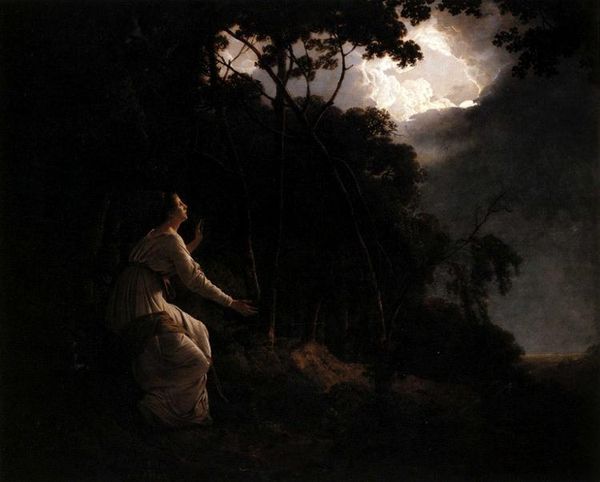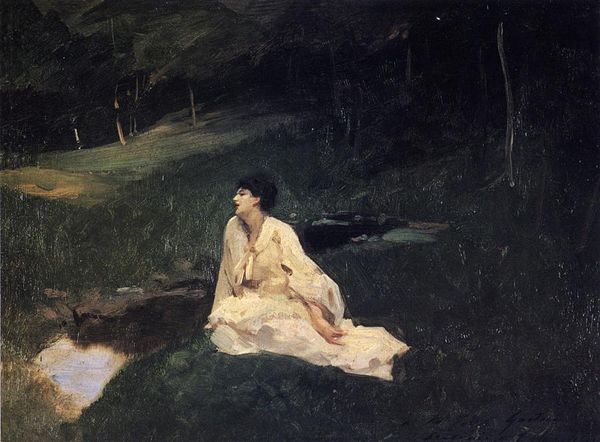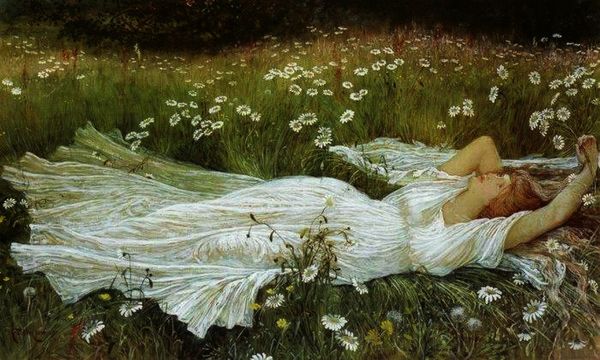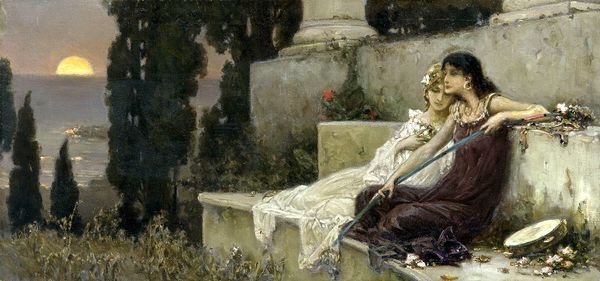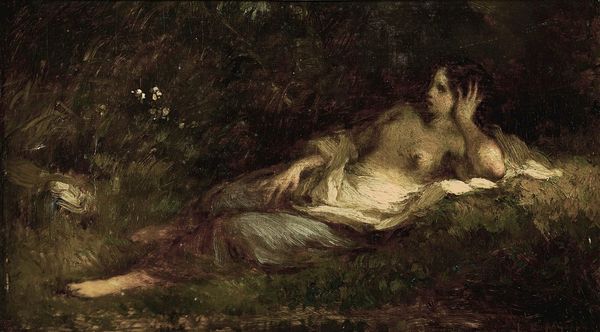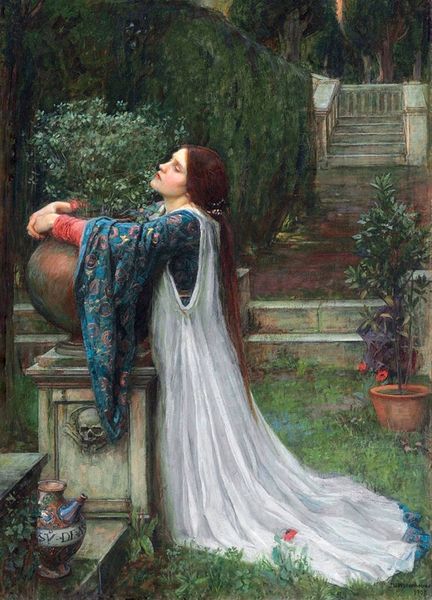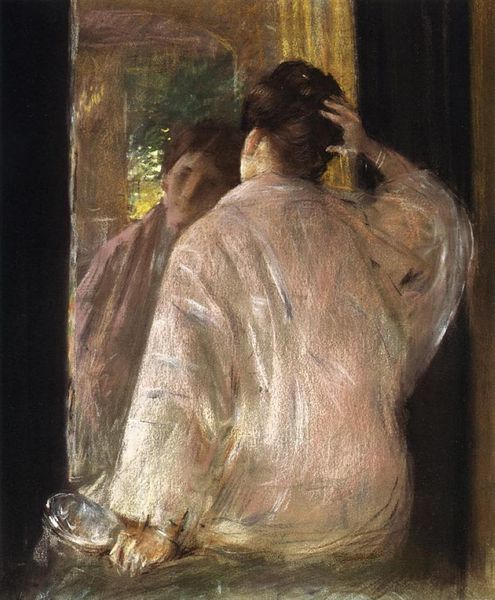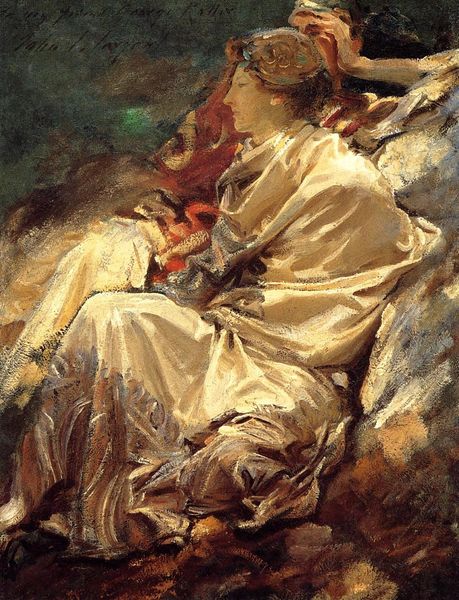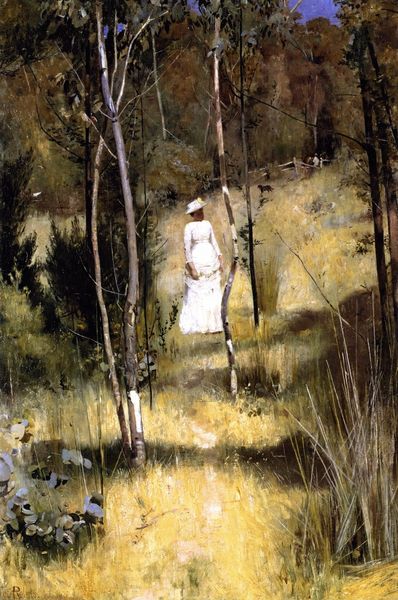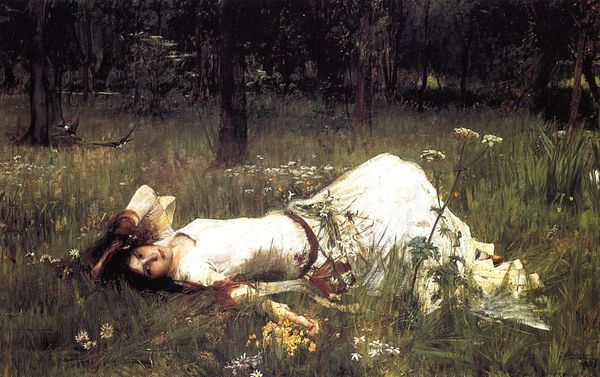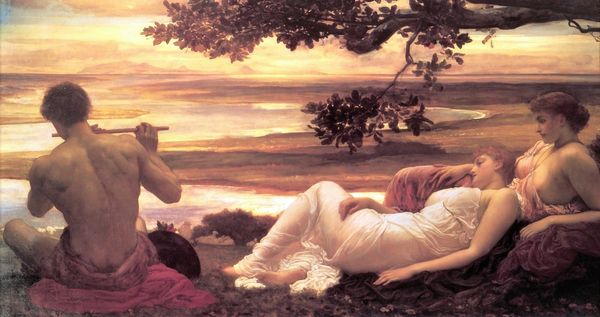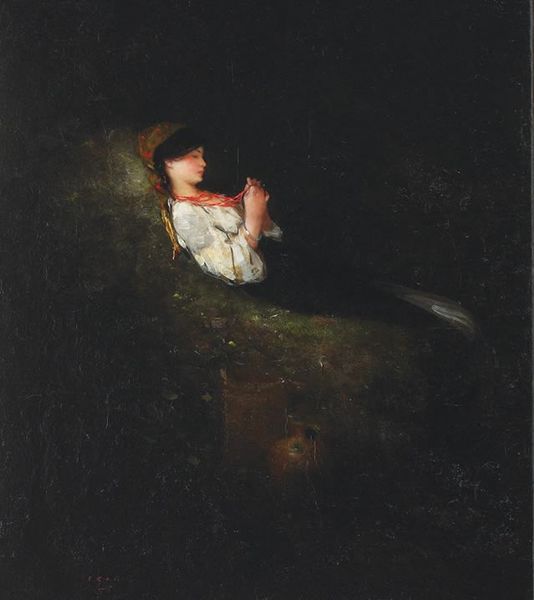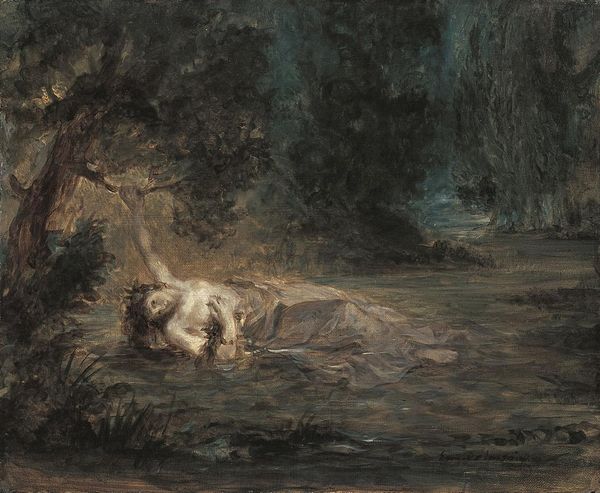
Copyright: Public domain
Curator: Here we have Ivan Kramskoy's "Moonlit Night," an oil painting completed in 1880. It’s currently held in the Tretyakov Gallery in Moscow. Editor: Wow, there's an ethereal quality. It's like a scene dreamt up on a hot summer night, the air thick with humidity and secrets. I get lost in it. Curator: Kramskoy was deeply invested in realism, but his realism also contained these hints of romanticism. Look at the application of paint itself; think of how he achieves luminosity on the woman’s dress under limited lighting conditions. What do you make of his artistic choices? Editor: It is captivating; the soft brushstrokes, almost like whispers of light. The white dress practically glows. The whole thing feels so intimate, like a private moment caught in time. It reminds me of moments in my childhood; pure serenity and slight melancholy. Curator: The contrast between the industrial revolution and an older society's expectations for woman’s attire and behavior offers a way to see this picture. Consider the material constraints versus the desire for individuality, freedom and an almost desperate search for meaning. Editor: Absolutely! I see a tension between beauty and restriction, but there's an acceptance in her eyes too. Like she knows the world is both beautiful and unfair. There's so much depth, yet it remains so understated, so simple. It is truly unforgettable. Curator: Thinking about materiality, let’s also not forget that paint, the ground the artist paints on, the brushes all speak to certain class status. It's about so much more than simply the image depicted. Editor: Well, this reminds us of the profound and emotional conversation sparked from color and light. The way art speaks beyond words—almost in emotions alone. Curator: Precisely. Let us reflect, therefore, on the socio-economic aspects. It allows for multiple dimensions from what is shown on the canvas before us.
Comments
No comments
Be the first to comment and join the conversation on the ultimate creative platform.
